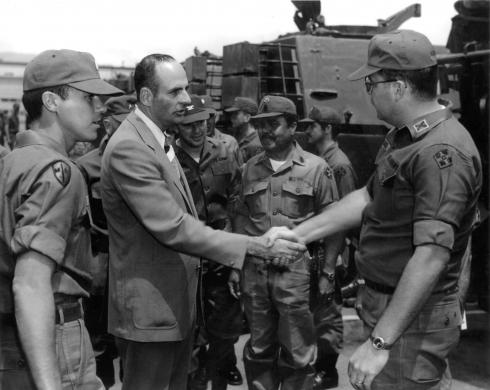
The Smithsonian’s National Air and Space Museum Trophy for 2014 will be awarded in the Lifetime Achievement category to Norman R. Augustine and in the Current Achievement category to the Dawn Flight Team. They will be presented their awards March 26 at a black-tie dinner in Washington, D.C.
Established in 1985, the award recognizes outstanding achievements in the fields of aerospace science and technology and their history. As in past years, Trophy winners receive a miniature version of “The Web of Space,” a sculpture by artist John Safer.
“The winners of the 2014 Trophy Awards have moved the needle in the advancement of aviation and space exploration in different but major ways,” said Gen. J.R. “Jack” Dailey, director of the museum. “In the realm of aerospace policy, Norm Augustine stands out as a leader known for positive accomplishments, and the Dawn Flight Team’s innovative use of new technology will open pathways to further deep-space exploration.”
2014 Trophy Award Recipients
The Lifetime Achievement winner, Augustine, is one of the most significant leaders in the aerospace world. Throughout his more than 50 years of service in the development of aerospace technology, Augustine has held numerous federal- and private-sector leadership positions and is a longtime proponent for ensuring the place of science and engineering on the nation’s list of priorities. An engineer from Princeton University, he began his career at the Douglas Aircraft Company in 1958 before moving to the U.S. Department of Defense, where he rose to the position of Acting Secretary of the Army. In 1977 he joined Martin Marietta as a vice president, and later became CEO. He also chaired the Advisory Committee on the Future of the U.S. Space Program. He helped engineer the merger of Martin and Lockheed in 1995 and became the CEO of this new company—Lockheed Martin—before his retirement in 1997.
The Current Achievement winner, the team responsible for the Dawn spacecraft, took on the challenging journey to explore some of the last uncharted worlds in the inner solar system. It successfully guided its spacecraft into orbit around Vesta, the second most massive belt asteroid in the solar system. After more than a year of exploration, the Dawn spacecraft left Vesta orbit in September 2012 to journey on to the dwarf planet Ceres, which it will orbit in 2015. No other spacecraft in more than 50 years of space exploration has left orbit around a distant solar system body to travel to—and eventually orbit—another extraterrestrial body. The Dawn mission has advanced development and use of solar electric propulsion. The team is recognized for transforming an experimental technology into an operational system for deep-space exploration.
More information about the National Air and Space Museum Trophy and a complete list of past winners are available at Trophy.
The National Air and Space Museum Trophy event is made possible through the support of The Hillside Foundation, BAE Systems, Atlas Air Worldwide, The Claude Moore Charitable Foundation, L-3 and Pratt & Whitney.
The National Air and Space Museum building on the National Mall in Washington, D.C., is located at Sixth Street and Independence Avenue S.W. The museum’s Steven F. Udvar-Hazy Center is located in Chantilly, Va., near Washington Dulles International Airport. Both facilities are open daily from 10 a.m. until 5:30 p.m. (closed Dec. 25). Admission is free, but there is a $15 fee for parking at the Udvar-Hazy Center.
# # #
Norm Augustine, Under Secretary of the Army